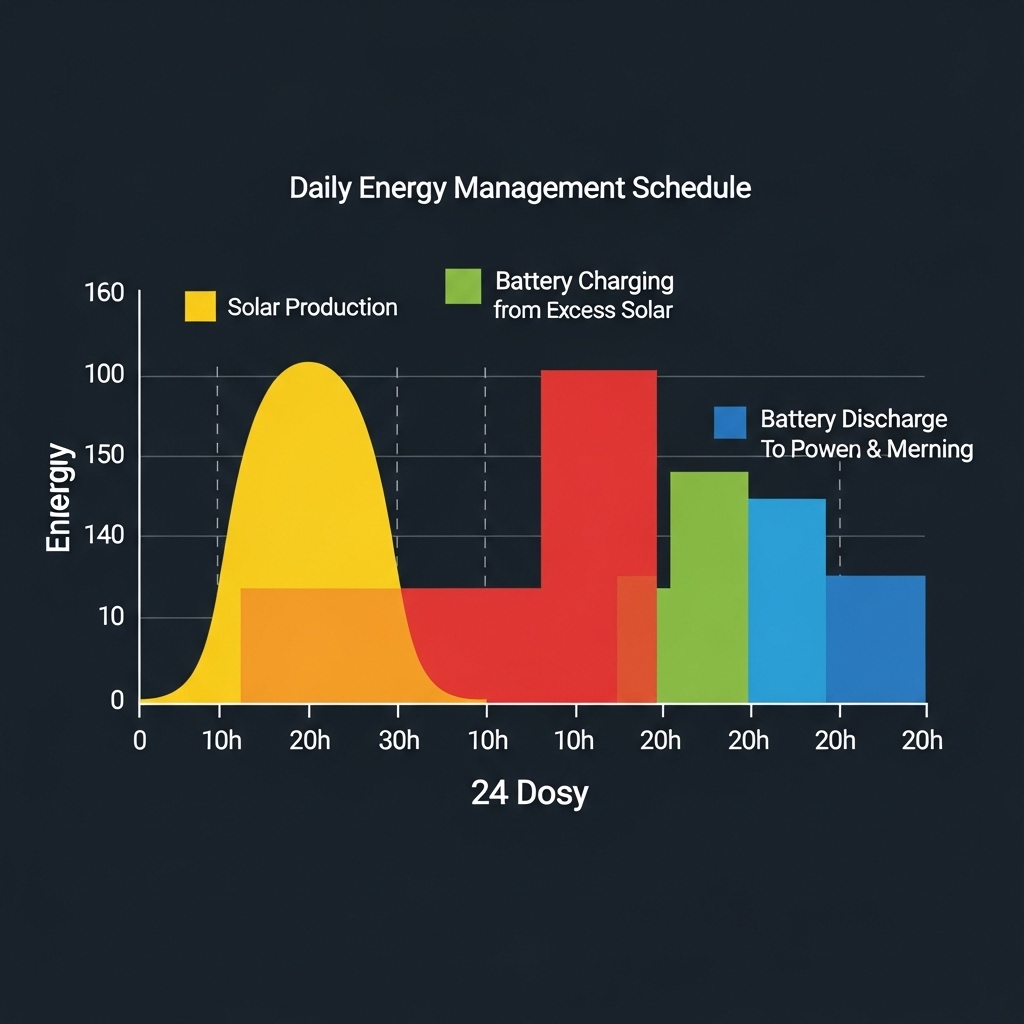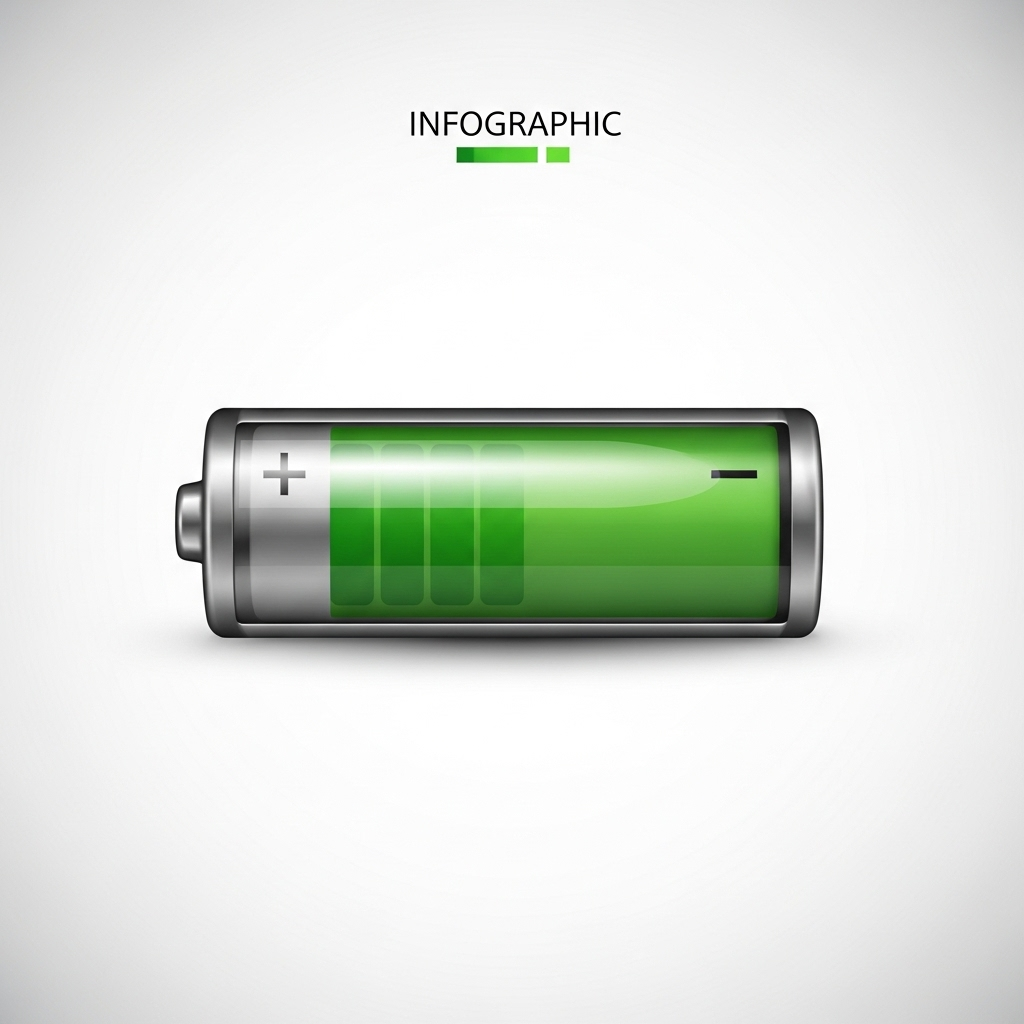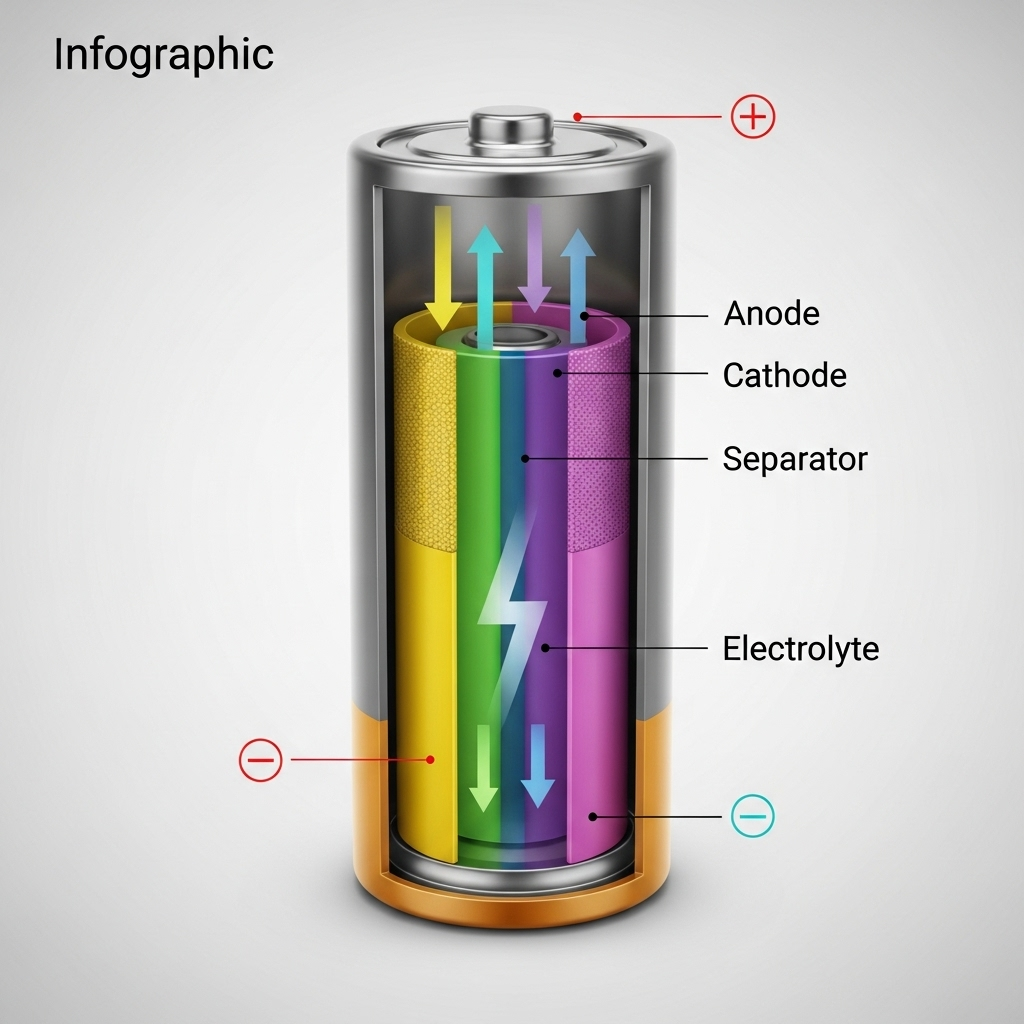An energy storage system (ESS) offers more than just backup power; it's a tool for intelligent energy management. The central challenge for many owners is a balancing act: how do you maximize savings from Time-of-Use (ToU) electricity rates without accelerating the degradation of your expensive battery? The answer lies in a well-planned daily State of Charge (SOC) schedule. This blueprint provides the strategies to create a schedule that aligns your financial goals with the long-term health of your system.
Understanding the Core Components: SOC, ToU, and Battery Longevity
Before creating a schedule, it's crucial to grasp the three elements you'll be managing. A smart strategy is built on a solid understanding of these fundamentals.
What is State of Charge (SOC)?
Think of State of Charge as the fuel gauge for your battery. It's expressed as a percentage, where 100% is fully charged and 0% is completely empty. However, operating a battery at these extremes is detrimental to its health. For lithium iron phosphate (LiFePO4) batteries, the most common type in modern home storage, maintaining an optimal SOC window—for instance, between 20% and 90%—is key to a long and productive life. Pushing the battery to its absolute limits regularly can reduce its overall lifespan.
Decoding Time-of-Use (ToU) Tariffs
Time-of-Use tariffs are pricing plans offered by utility companies that charge different rates for electricity at different times of the day. These are typically broken down into three periods:
- Off-Peak: Late night and early morning, when electricity demand is lowest and cheapest.
- Mid-Peak: Morning and early afternoon, with moderate demand and pricing.
- Peak: Late afternoon and evening (e.g., 4 PM to 9 PM), when demand is highest and electricity is most expensive.
The financial goal of a home battery system is simple: charge your battery with cheap solar power during the day (or cheap grid power during off-peak hours) and use that stored energy during the expensive peak hours, minimizing your reliance on the grid.
The Connection Between Usage and Lifespan
Every battery has a finite number of charge and discharge cycles it can perform before its capacity significantly degrades. This is known as its cycle life. The depth of these cycles, or Depth of Discharge (DoD), directly impacts this lifespan. A deep discharge (e.g., from 100% down to 10%) puts more strain on the battery than a shallow one (e.g., from 80% down to 30%). As detailed in a guide on solar storage performance, a LiFePO4 battery might offer over 6,000 cycles at an 80% DoD, but this number can increase substantially with shallower average discharge depths. Therefore, your daily SOC schedule is a direct lever on your battery's longevity.
Crafting Your Daily SOC Schedule: A Strategic Blueprint
With the fundamentals in place, you can now design a schedule that fits your needs. Most modern hybrid inverters and energy storage systems allow you to program these settings directly through a mobile app or web portal.
The 'Peak Shaving' Strategy for Maximum Savings
This approach prioritizes immediate financial returns by aggressively targeting ToU arbitrage. The daily flow looks like this:
- Morning (Off-Peak): The battery is at its minimum SOC from the previous night (e.g., 20%). The home draws power from the grid for early morning needs.
- Midday (Solar Production): Solar panels first power the home's loads. Excess solar energy then charges the battery. The goal is to reach a high SOC (e.g., 95-100%) before the peak period begins.
- Evening (Peak Hours): The system is set to discharge the battery to power the home. This minimizes or eliminates drawing expensive power from the grid.
- Overnight (Off-Peak): The battery rests at its pre-defined minimum SOC, ready for the next day.
This strategy is effective but results in a deep daily discharge, which may impact long-term battery health if the minimum SOC is set too low.
The 'Longevity First' Approach
This conservative strategy prioritizes preserving the battery's lifespan over maximizing daily savings. It involves using a much narrower SOC window.
- Minimum SOC: Set a higher minimum SOC, for example, 40%.
- Maximum SOC: You might cap the maximum charge at 90% to reduce stress on the cells.
In this model, you still use battery power during peak hours, but you discharge less of it. You may still need to draw some power from the grid on high-consumption evenings, but the reduced strain on the battery can extend its operational life by thousands of cycles.
Finding the Sweet Spot: The Hybrid Model
For most users, a hybrid approach offers the best of both worlds. This involves setting a balanced SOC window (e.g., 25% to 90%) and adjusting it based on conditions. The International Energy Agency (IEA) emphasizes that operational flexibility is critical for modern power systems. A study on getting renewables onto the grid notes that scheduling practices should allow for frequent updates close to real-time for maximum efficiency. You can apply this principle to your own system by creating dynamic schedules for different seasons, adjusting your minimum SOC to be lower in summer (when solar recharge is guaranteed) and higher in winter (as a larger buffer).
Advanced Optimization Techniques
Once you have a basic schedule, you can refine it further with more advanced methods for even better performance.
Integrating Weather Forecasts
Many smart ESS can integrate with online weather services. This allows for proactive adjustments:
- On a Forecasted Sunny Day: The system can confidently use a deeper discharge cycle the night before, knowing it will fully recharge the next day.
- On a Forecasted Cloudy Day: The system can adopt a 'Longevity First' approach, preserving more stored energy in case solar production is insufficient to cover daytime loads and recharge the battery.
System-Level Coordination and Grid Services
Your home battery is part of a larger energy transition. As the IEA's report on the China Power System Transformation discusses, coordinated scheduling of distributed resources like home batteries provides valuable flexibility to the entire grid. In the future, utility programs may offer financial incentives for allowing them to manage your battery's charge and discharge cycles to help stabilize the grid, adding another layer to your optimization strategy.
Using Your Own Data to Refine Schedules
Your system's monitoring portal is a powerful tool. Review your daily consumption graphs, solar production curves, and battery SOC levels. Are you consistently hitting your minimum SOC too early in the evening? Perhaps you need to set a slightly higher reserve. Is your battery fully charged by 11 AM on most days? You might be able to add more daytime loads to use that free solar energy directly.
A Practical Comparison: Scheduling Scenarios
To illustrate the trade-offs, here is a comparison of different scheduling philosophies. Assumed battery capacity is 10 kWh and peak ToU rate is $0.40/kWh higher than solar export value.
| Scenario | Minimum SOC Target | Primary Goal | Potential Daily Savings | Estimated Impact on Lifespan |
|---|---|---|---|---|
| A: Max Savings | 10% (1 kWh reserve) | Maximize ToU Arbitrage | High (Up to 9 kWh * $0.40 = $3.60) | Higher degradation due to deep cycles. |
| B: Max Longevity | 40% (4 kWh reserve) | Preserve Battery Health | Moderate (Up to 6 kWh * $0.40 = $2.40) | Lower degradation, potentially thousands of extra cycles. |
| C: Balanced Hybrid | 25% (2.5 kWh reserve) | Balance Savings & Health | Good (Up to 7.5 kWh * $0.40 = $3.00) | Moderate degradation, a good compromise for most users. |
Disclaimer: These figures are for illustrative purposes. Actual savings depend on your specific ToU rates, consumption, and system efficiency. This is not financial advice.
Crafting Your Personal Energy Strategy
There is no single 'best' daily SOC schedule. The optimal blueprint is the one tailored to your specific circumstances—your utility's rate structure, your daily energy consumption patterns, and your personal priorities. By starting with a balanced hybrid model and using data to make small adjustments, you can create a dynamic schedule that saves you money, extends the life of your investment, and gives you greater control over your energy future.
Frequently Asked Questions
What is the ideal SOC window for a LiFePO4 battery?
A common recommendation for balancing performance and longevity is to operate between 20% and 90% SOC.
This avoids the high-stress states at the very top and bottom of the charge range, which can accelerate capacity degradation over time.
Can I change my SOC schedule?
Yes, and you should.
Most modern energy storage systems are designed for easy user adjustment via an app. It is a good practice to review and potentially tweak your schedule seasonally or if your daily routines change.
How does my solar inverter affect SOC scheduling?
The inverter is the brain of your system.
Its software determines how and when to charge or discharge the battery based on your settings. A high-quality hybrid inverter will offer flexible and granular control over SOC parameters, ToU periods, and even integrate weather data for smarter decision-making.
What happens if I set my minimum SOC too low?
Setting a very low minimum SOC (e.g., 5% or 10%) maximizes the available energy for peak shaving but has two main drawbacks.
First, it puts more strain on the battery, potentially shortening its lifespan. Second, it leaves you with very little backup power in case of an unexpected grid outage.
Does my battery need to be fully charged to 100% every day?
No, it is not necessary and can be slightly detrimental over the long term.
Consistently charging to 100% and holding it there for extended periods can cause minor stress on the battery cells. Capping the charge at 90% or 95% is a common strategy to promote longevity with a negligible impact on available energy.





Leave a comment
All comments are moderated before being published.
This site is protected by hCaptcha and the hCaptcha Privacy Policy and Terms of Service apply.